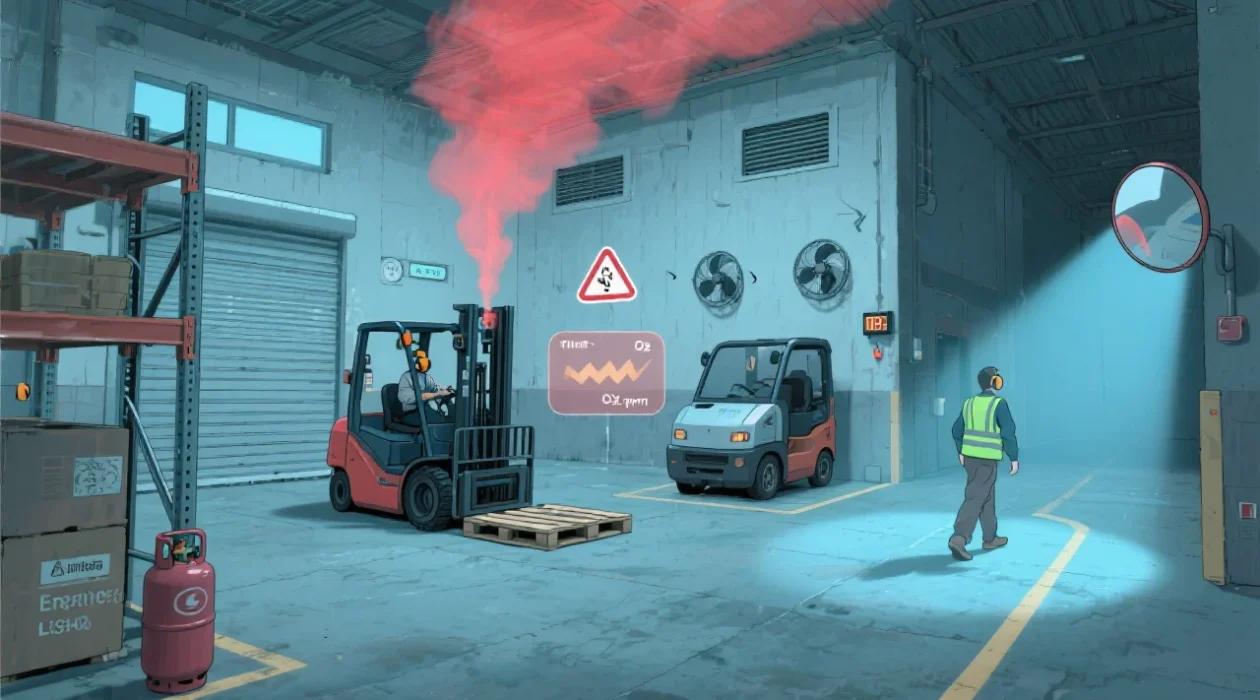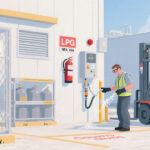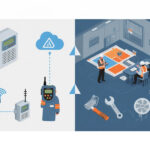Operating industrial equipment in closed or enclosed environments creates a unique set of hazards that differ significantly from outdoor operations. Closed environments—including warehouses, manufacturing facilities, storage buildings, tunnels, and partially enclosed structures—restrict natural ventilation, limit escape routes, and can amplify the consequences of equipment malfunctions or operator errors. These confined conditions transform routine equipment operations into potentially hazardous activities that require specialized risk assessment and control measures.
The fundamental challenge lies in how enclosed spaces alter the behavior of gases, vapors, heat, and sound generated by equipment operation. What might be a minor issue in an open environment can quickly become life-threatening when natural dispersion and dilution are limited. Additionally, the psychological and physiological effects of working in confined spaces can impair judgment and reaction times, increasing the likelihood of accidents.
Understanding these specific risks is essential for developing comprehensive safety programs that protect workers while maintaining operational efficiency in enclosed industrial environments.
Atmospheric Hazards and Air Quality Issues
Closed environments create unique atmospheric challenges that can rapidly develop into life-threatening conditions.
Oxygen Depletion
Equipment operation in closed environments can consume available oxygen or displace it with other gases, creating asphyxiation hazards:
Combustion Equipment Risks:
- Internal combustion engines consume oxygen during operation
- Propane, diesel, and gasoline-powered equipment compete with workers for available oxygen
- Oxygen levels below 19.5% create immediate danger to human life
- Enclosed spaces can reach dangerous oxygen levels within minutes of equipment operation
Displacement Hazards:
- Carbon dioxide from combustion is heavier than air and accumulates in low areas
- Inert gases from industrial processes can displace oxygen
- Equipment exhaust in enclosed spaces creates oxygen displacement zones
- Workers may be unaware of oxygen depletion until symptoms become severe
Toxic Gas Accumulation
Enclosed environments prevent natural dispersion of toxic gases produced by equipment operation:
Carbon Monoxide Poisoning:
- Incomplete combustion in any internal combustion engine produces carbon monoxide
- Carbon monoxide is colorless, odorless, and bonds with hemoglobin more readily than oxygen
- Concentrations as low as 35 parts per million can cause health effects over time
- Levels above 400 ppm can be immediately dangerous to life and health
Exhaust Gas Toxicity:
- Diesel exhaust contains carcinogenic particulates and nitrogen oxides
- Gasoline engine exhaust includes benzene, formaldehyde, and other toxic compounds
- Propane combustion can produce aldehydes and other harmful byproducts
- Accumulation in closed spaces concentrates these toxins to dangerous levels
Equipment-Specific Emissions:
- Hydraulic fluid vapors from heated systems
- Battery off-gassing from charging operations
- Chemical vapors from cleaning solvents and maintenance fluids
- Refrigerant leaks from cooling systems
Explosive Atmosphere Formation
Closed environments can develop explosive atmospheres when flammable vapors accumulate:
Fuel Vapor Accumulation:
- Gasoline vapors have a flash point of -45°F, creating immediate fire hazards
- Propane is heavier than air and settles in low areas, creating explosive zones
- Diesel fuel vapors, while less volatile, can still create hazardous conditions
- Small fuel leaks that would be harmless outdoors become dangerous in enclosed spaces
Lower Explosive Limit (LEL) Concentrations:
- Gasoline vapors become explosive at 1.4% concentration in air
- Propane becomes explosive at 2.1% concentration
- These concentrations can develop rapidly in poorly ventilated enclosed spaces
- Detection equipment often cannot respond quickly enough to prevent dangerous accumulations
Ventilation and Air Circulation Challenges
Inadequate ventilation represents one of the most significant risk factors in closed environment operations.
Natural Ventilation Limitations
Structural Constraints:
- Building design may limit natural air exchange
- Sealed buildings for energy efficiency restrict air movement
- Seasonal weather changes affect natural ventilation rates
- Door and window positions may not provide adequate cross-ventilation
Microclimates and Dead Air Zones:
- Equipment and storage create areas with little or no air movement
- Corners, alcoves, and beneath equipment become vapor collection points
- Temperature stratification prevents mixing of air layers
- Heavy gases accumulate in these zones regardless of general ventilation
Mechanical Ventilation Failures
System Reliability Issues:
- Power outages disable mechanical ventilation systems
- Equipment failures can occur without immediate detection
- Maintenance issues reduce ventilation effectiveness
- Ductwork blockages prevent proper air distribution
Inadequate Design:
- Ventilation systems designed for normal occupancy may be inadequate for equipment operation
- Air exchange rates insufficient for equipment emission loads
- Poor air distribution creates zones of inadequate ventilation
- Lack of consideration for equipment-specific ventilation needs
Seasonal Variations:
- Winter building sealing reduces natural air exchange
- Summer cooling systems may recirculate contaminated air
- Humidity control systems can affect ventilation effectiveness
- Energy conservation measures often conflict with ventilation requirements
Heat Buildup and Thermal Hazards
Equipment operation in closed environments creates significant thermal management challenges.
Heat Accumulation Effects
Equipment Heat Generation:
- Internal combustion engines generate substantial heat during operation
- Hydraulic systems operating under load produce heat through friction
- Electrical equipment and motors contribute to ambient temperature rise
- Heat accumulation can reach dangerous levels in poorly ventilated spaces
Thermal Stress on Personnel:
- Elevated temperatures increase worker fatigue and reduce alertness
- Heat stress affects decision-making ability and reaction times
- Protective equipment becomes less tolerable in high-temperature environments
- Dehydration and heat-related illnesses become more likely
Equipment Performance Degradation:
- Overheating reduces equipment efficiency and reliability
- Elevated temperatures accelerate wear and component failure
- Cooling systems may be overwhelmed in enclosed, heated environments
- Battery performance degrades significantly in high-temperature conditions
Fire Risk Amplification
Ignition Source Concentration:
- Hot surfaces from equipment operation create multiple ignition sources
- Electrical equipment operates at higher temperatures in enclosed spaces
- Static electricity generation increases in dry, heated environments
- Maintenance activities involving hot work become more hazardous
Fuel Load Considerations:
- Enclosed spaces often contain additional combustible materials
- Storage of fuels, lubricants, and maintenance supplies increases fire load
- Packaging materials, pallets, and stored goods provide fuel for fires
- Limited escape routes amplify the consequences of fire incidents
Noise and Vibration Amplification
Closed environments significantly amplify the noise and vibration effects of equipment operation.
Acoustic Hazards
Sound Reflection and Amplification:
- Hard surfaces in enclosed spaces reflect and amplify equipment noise
- Sound levels can exceed safe exposure limits even with moderate equipment noise
- Reverberation creates sustained noise exposure beyond direct equipment operation
- Communication difficulties increase accident risks
Hearing Protection Challenges:
- Enclosed spaces make communication more difficult when using hearing protection
- Emergency signals may be masked by amplified equipment noise
- Workers may remove hearing protection to communicate, increasing exposure
- Noise-induced hearing loss risks increase significantly in enclosed operations
Vibration Transmission
Structural Vibration:
- Equipment vibration transmits through building structures
- Resonance effects can amplify vibrations beyond their source
- Structural damage may occur from prolonged vibration exposure
- Equipment mounting becomes more critical in enclosed spaces
Operator Exposure:
- Whole-body vibration exposure increases in enclosed spaces with hard surfaces
- Vibration reflection from walls and floors creates multiple exposure sources
- Enclosed operator cabs may trap and amplify vibrations
- Long-term health effects from vibration exposure become more significant
Emergency Response Limitations
Closed environments create unique challenges for emergency response and evacuation.
Limited Egress Options
Evacuation Route Constraints:
- Fewer and potentially longer evacuation routes compared to outdoor operations
- Equipment and storage may block emergency exits
- Doors may be secured for security reasons, limiting emergency access
- Narrow aisles and passages slow evacuation during emergencies
Visibility and Orientation Issues:
- Smoke or vapor accumulation can quickly reduce visibility to zero
- Complex layouts make navigation difficult during emergency conditions
- Emergency lighting may be inadequate for safe evacuation
- Panic and disorientation increase in enclosed spaces during emergencies
Emergency Service Access
Response Time Delays:
- Emergency services may have difficulty locating and accessing incidents in large facilities
- Building security systems may delay emergency responder access
- Complex facility layouts slow emergency response teams
- Equipment may block access routes for emergency vehicles and personnel
Rescue Operation Challenges:
- Confined space rescue requires specialized equipment and training
- Atmospheric hazards may prevent or delay rescue operations
- Limited working space restricts rescue equipment and techniques
- Multiple casualties may overwhelm rescue capabilities
Equipment-Specific Risk Factors
Different types of equipment create unique hazards when operated in closed environments.
Internal Combustion Equipment
Emission Concentration:
- Diesel equipment produces carcinogenic particulates that accumulate in enclosed spaces
- Gasoline engines produce carbon monoxide and volatile organic compounds
- Propane equipment can create explosive atmospheres from fuel system leaks
- All combustion engines deplete oxygen and produce carbon dioxide
Fuel System Hazards:
- Fuel spills create fire and explosion hazards in enclosed spaces
- Fuel vapors concentrate to dangerous levels more quickly
- Refueling operations in enclosed spaces create multiple hazards
- Fuel storage in enclosed areas increases fire load and vapor generation
Electric Equipment
Charging Operation Risks:
- Battery charging produces hydrogen gas that can accumulate to explosive concentrations
- Off-gassing from lead-acid batteries includes sulfuric acid vapors
- Charging operations generate heat that adds to thermal load
- Electrical faults may not be immediately detected in enclosed charging areas
Electrical System Hazards:
- Electrical arcing can ignite accumulated vapors
- Ground fault conditions may not trip properly in some enclosed environments
- Moisture accumulation increases electrical hazard risks
- Emergency electrical disconnects may be inaccessible during emergencies
Hydraulic Equipment
Fluid Leak Hazards:
- Hydraulic fluid spills create slip hazards on smooth enclosed floors
- High-pressure leaks can cause injection injuries
- Heated hydraulic fluid produces vapors that may be toxic
- Fire risks from hydraulic fluid contacting hot surfaces
Pressure System Risks:
- Hydraulic system failures can release stored energy rapidly
- Pressure accumulator failures create projectile hazards
- Enclosed spaces concentrate noise from hydraulic system operation
- Emergency pressure relief may not adequately protect in enclosed spaces
Risk Assessment and Control Strategies
Managing equipment risks in closed environments requires systematic approaches that address the unique hazards present.
Comprehensive Hazard Identification
Environmental Assessment:
- Evaluate building ventilation design and capacity
- Identify potential vapor accumulation zones
- Assess emergency egress routes and accessibility
- Determine atmospheric monitoring requirements
Equipment Evaluation:
- Analyze emission characteristics for all equipment types
- Evaluate fuel system integrity and leak potential
- Assess heat generation and thermal management requirements
- Determine electrical system safety and grounding adequacy
Engineering Controls
Ventilation System Design:
- Implement mechanical ventilation designed specifically for equipment emissions
- Provide local exhaust ventilation for high-emission equipment
- Install emergency ventilation systems with backup power
- Design air circulation patterns to prevent dead air zones
Atmospheric Monitoring:
- Install continuous monitoring for oxygen, carbon monoxide, and combustible gases
- Provide portable detection equipment for work areas
- Implement alarm systems with automatic equipment shutdown
- Establish monitoring protocols for different operational conditions
Equipment Modifications:
- Use catalytic converters or emission control systems where applicable
- Install automatic shutoff systems for abnormal atmospheric conditions
- Implement spark arrestors and explosion-proof electrical equipment
- Design equipment layout to optimize ventilation effectiveness
Administrative Controls
Operational Procedures:
- Develop specific procedures for enclosed space equipment operation
- Establish atmospheric testing requirements before equipment operation
- Implement permit systems for equipment operation in high-risk areas
- Create emergency response procedures specific to enclosed space hazards
Training Programs:
- Provide comprehensive training on closed environment hazards
- Include atmospheric hazard recognition and response
- Train on proper use of detection equipment and emergency procedures
- Ensure understanding of evacuation routes and emergency protocols
Monitoring and Inspection:
- Establish regular inspection schedules for ventilation systems
- Monitor atmospheric conditions during equipment operation
- Track equipment maintenance requirements for safe operation
- Document all safety system tests and maintenance activities
Conclusion
Operating equipment in closed environments presents complex safety challenges that require comprehensive understanding and systematic control measures. The combination of limited ventilation, restricted egress, and potential for rapid atmospheric contamination creates risks that can quickly escalate from minor concerns to life-threatening emergencies.
Success in managing these risks depends on recognizing that closed environments fundamentally change the risk profile of equipment operation. What may be routine and safe in outdoor operations becomes complex and potentially hazardous when natural dispersion and dilution are eliminated.
Effective risk management requires integrated approaches that combine proper equipment selection, engineering controls, administrative procedures, and comprehensive training. Organizations that understand and address these unique challenges can operate equipment safely in enclosed environments while protecting their most valuable asset—their workers’ health and safety.
The investment in proper risk assessment and control measures pays dividends through reduced incidents, regulatory compliance, and most importantly, the protection of human life. As industrial operations increasingly move into enclosed environments for efficiency and security reasons, understanding and managing these risks becomes ever more critical for operational success and worker safety.



